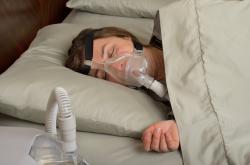Upper Airway Respiratory Syndrome (UARS)
What is UARS (Upper Airway Respiratory Syndrome) and how can it be diagnosed? What are the most effective treatments for this condition?
What is UARS (Upper Airway Respiratory Syndrome)?
The central issue with Upper Airway Respiratory Syndrome is nasal resistance. We need oxygen to be delivered efficiently to the lungs while we are asleep. If the interior passages of the nose are congested, then breathing becomes much harder. It does not necessarily mean that the lungs receive less oxygen, as is the case with sleep apnea, but it does mean that every breath costs the body more effort. The result is that sufferers from UARS are more fatigued during the day than they would otherwise be.
UARS is caused by congestion in the tissues of the nose, often a result of a yeast overgrowth. Snoring can be part of the condition.
UARS is a recently recognized sleep disorder; in fact, the term has only been in use since 1993. Part of the reason for this is because only recently has it become possible to identify the subtle changes in breathing patterns during sleep, which are characteristic for this disorder.
How can UARS be diagnosed?
Unfortunately only a specialist sleep lab can diagnose UARS successfully. Until recently the test for UARS involved putting a small tube down into the esophagus, but now there are less intrusive tests for the disorder. These more user-friendly technologies can monitor pressure changes in the nose and alternations in breathing rates. If you are having a test in a sleep lab and you suspect UARS, make sure that the lab is properly equipped to test for it.
However, there is something you can do at home to check for UARS if, for any reason, you cannot get to a lab that specializes in sleep issues. You will need a mirror and a toothpick. Watch your face in the mirror as you close one nostril gently with your finger or thumb. Breathe through the other nostril (with your mouth closed) and watch what happens to the nostril. It may collapse in which case hold it open with the flat side of the toothpick. If your breathing seems less of an effort with the nostril held open this way, then use nasal strips and dilators at night.
What are the treatments for UARS?
There are several successful treatments for UARS, but you may need to try more than one to overcome the problem. They range from the simple to the more intrusive.
The simplest treatment is to use a nasal dilator. It can be used by anyone who suffers from nasal resistance, not just snorers. Nasal strips, which are easily available, can also be very effective. Another product, which may be worth trying, is the sinusitis nose spray, a combination of several medications which treats the nasal congestion and sinusitis that can trigger UARS.
It is recommended to try each of these medications for at least a month. It is also possible to combine them. Another treatment is CPAP machine (Continuous Positive Airway Pressure), which delivers air into the airway through a specially designed mask that keeps the nasal passages open. There are various oral and orthodontic appliances which move the jaw forwards, helping to keep the passages open. As a last resort, you may consider a surgical option: surgery on the soft palate or the widening of narrowed jawbones.





.jpg)









Leave a comment